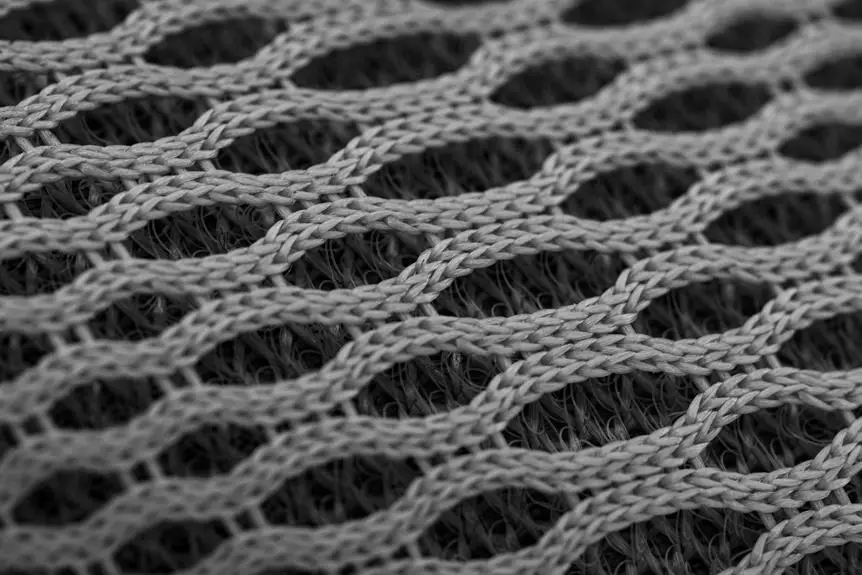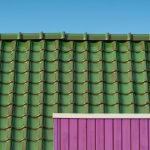When it comes to fabric waterproofing, you might be making some common mistakes that can undermine your efforts. You may find yourself choosing the wrong products or ignoring care labels, which can lead to unwanted damage. Maybe you even skip the crucial step of cleaning before treatment, thinking it's unnecessary. These missteps can significantly affect the performance of your waterproofing efforts. Before you proceed with your next project, consider what you might be overlooking that could make all the difference. What are the best practices you should follow to ensure lasting protection?
Table of Contents
Key Takeaways
- Failing to select the right waterproofing product for specific fabric types can lead to damage and ineffective protection.
- Ignoring care labels and manufacturer guidelines may result in improper maintenance and compromised waterproofing.
- Not thoroughly cleaning fabrics before treatment prevents proper adhesion of waterproofing agents, leading to reduced effectiveness.
- Applying waterproofing agents unevenly or incorrectly can create weak spots, allowing water to penetrate.
Choosing the Wrong Products
Choosing the wrong waterproofing products can lead to ineffective protection and wasted time. When you're selecting a waterproofing solution, it's crucial to understand what your fabric needs. Not all products are created equal; some are designed for specific materials while others are more versatile. If you apply a product meant for synthetic fabrics to natural fibers, you might end up damaging your item or compromising its breathability.
Before making a purchase, consider factors like the fabric type, intended use, and environmental conditions. For instance, if you're treating outdoor gear, opt for a product specifically formulated for that purpose. It'll offer better durability and resistance to wear. Also, check for reviews or recommendations from trusted sources to ensure you're investing in a reliable option.
Don't forget to read the labels carefully. Some products may contain harmful chemicals that could damage your fabric or pose health risks. By choosing the right waterproofing product tailored to your specific needs, you'll save yourself from future headaches and ensure your belongings remain protected from the elements.
Ignoring Fabric Care Labels
When it comes to waterproofing fabric, ignoring care labels can lead to serious mistakes.
You might misinterpret care symbols or overlook important manufacturer guidelines, which can damage your items.
Always check those labels to ensure you're using the right methods and products for your specific fabrics.
Importance of Labels
Ignoring fabric care labels can lead to disastrous results, compromising both the waterproofing and longevity of your gear. These labels provide essential information on how to maintain your items, ensuring they perform as intended. When you skip over these instructions, you risk using the wrong cleaning products or methods that could damage the fabric, stripping away its waterproofing properties.
Understanding the importance of labels is crucial. They often include recommendations for washing temperatures, drying methods, and appropriate detergents that won't harm the fabric. For instance, some fabrics require gentle cycles or specific drying techniques to retain their water-resistant features. If you ignore this guidance, you might accidentally ruin your gear, rendering it useless when you need it most.
Additionally, labels can inform you about any special treatments your fabric has undergone, which may require specific care. By following the care instructions, you're not just preserving the waterproofing; you're also extending the life of your gear.
Misinterpreting Care Symbols
Misinterpreting care symbols can lead to costly mistakes that jeopardize your fabric's waterproofing and durability. When you ignore fabric care labels, you risk using the wrong cleaning products or methods, which can strip away essential water-repellent coatings. For instance, a symbol indicating “do not wash” might tempt you to toss the item in the washing machine, inadvertently causing damage.
Understanding the symbols is essential. If a label shows a triangle with an “X,” it signifies you shouldn't bleach the fabric. Using bleach might seem like a quick fix for stains, but it can compromise the waterproofing. Similarly, a circle with a line underneath suggests you should only dry clean the item. Neglecting this can lead to fabric shrinkage or loss of water resistance.
Always take a moment to familiarize yourself with these symbols. They're there to help you maintain the integrity of your fabric. When you adhere to these guidelines, you not only extend the life of your item but also ensure it performs well in wet conditions.
Following Manufacturer Guidelines
Many people overlook the importance of following manufacturer guidelines, which can lead to unintended damage to waterproof fabrics. When you ignore fabric care labels, you risk compromising the very qualities that make the material waterproof. Each label provides crucial information about cleaning methods, recommended products, and specific temperatures to use during washing or drying.
For instance, using harsh detergents or fabric softeners can strip away the waterproofing agents, leaving your gear exposed to water. Similarly, skipping the recommended drying method—like air drying instead of tumble drying—might also damage the fabric's integrity.
Always take a moment to read and understand the guidelines before attempting any waterproofing treatment. If a manufacturer specifies a particular waterproofing spray, stick with that instead of trying to improvise with what you have at home.
Skipping Cleaning Before Treatment
Before applying any waterproofing treatment, you need to clean your fabric properly.
Residual dirt and grime can prevent the treatment from adhering effectively, leading to poor results.
Importance of Proper Cleaning
Properly cleaning your fabric before applying any waterproofing treatment is crucial for achieving the best results.
Skipping this step can lead to poor adhesion and reduced effectiveness of the treatment, leaving your fabric vulnerable to water damage. When you take the time to clean your fabric, you ensure that the waterproofing agent can bond properly and provide maximum protection.
Consider the benefits of cleaning your fabric first:
- Enhanced durability: A clean surface allows the treatment to last longer.
- Better protection: It helps shield against moisture and stains effectively.
- Improved appearance: You'll maintain the fabric's original look and feel.
- Cost efficiency: You won't waste money on ineffective waterproofing.
Residual Dirt Effects
Skipping the cleaning step can leave residual dirt on your fabric, which compromises the effectiveness of the waterproofing treatment. When you apply a waterproofing solution over dirt, oils, or stains, it creates a barrier that prevents the treatment from properly bonding with the fabric fibers. This means your waterproofing won't work as effectively, leading to potential water damage and reduced longevity of your items.
Think about it: dirt can trap moisture and lead to mold or mildew, which not only affects the fabric's integrity but also its appearance. Additionally, any leftover residues can cause uneven application of the waterproofing agent, resulting in patches that remain unprotected.
Before applying any treatment, take the time to clean your fabric thoroughly. Use a suitable detergent and ensure all dirt and residues are removed. Rinse well, and allow it to dry completely.
This extra effort guarantees that your waterproofing treatment adheres correctly, providing the protection you need. Remember, a clean surface is key to achieving the best results, so don't overlook this crucial step in your waterproofing process!
Applying Unevenly
Applying waterproofing spray unevenly can leave spots on your fabric that absorb water instead of repelling it. This can be frustrating, especially when you're counting on your gear to keep you dry. To avoid this common mistake, ensure you're applying the spray in a consistent manner.
Here are some pitfalls to watch out for:
- Inconsistent Coverage: Skipping areas leads to weak spots.
- Drips and Runs: Over-application can create puddles that don't dry evenly.
- Angle Issues: Spraying from the wrong angle can miss critical areas.
- Too Close: Holding the spray too close can result in uneven layers.
Overlooking Drying Times
Neglecting the recommended drying times after applying waterproofing spray can lead to diminished effectiveness and potential fabric damage. When you rush this process, the spray doesn't have a chance to fully bond with the fibers, leaving your fabric vulnerable to moisture. Each product comes with specific drying instructions, and ignoring them can result in a compromised waterproof barrier.
You might think a quick dry in the sun will suffice, but temperature and humidity can impact the drying process. If you apply a second coat before the first one has dried completely, you risk creating a sticky, uneven surface that attracts dirt and grime. This not only affects the fabric's appearance but also its performance.
Always check the manufacturer's guidelines for drying times and ensure you're in a suitable environment. If possible, allow your fabric to dry indoors where it's less affected by environmental factors.
Taking the time to let the waterproofing spray cure properly ensures your fabric remains protected for longer, providing you with the peace of mind you need when facing the elements. Remember, patience is key to achieving optimal results in waterproofing.
Neglecting Regular Maintenance
When you overlook regular maintenance, the waterproofing effectiveness of your fabric can significantly diminish over time. You might think that once you've waterproofed your gear, it'll stay protected forever, but that's far from the truth. Regular upkeep is essential to ensure your fabric remains resilient against moisture.
Here are some common consequences of neglecting maintenance:
- Increased susceptibility to water: Your fabric can become a sponge, absorbing moisture rather than repelling it.
- Mold and mildew growth: Damp environments can lead to unpleasant odors and health hazards if not addressed.
- Reduced lifespan of the fabric: Neglecting care can cause premature wear and tear, costing you more in replacements.
- Diminished performance: You may find yourself soaked in unexpected rain, ruining your outdoor adventures.
Assuming All Fabrics Are the Same
Not all fabrics are created equal, so assuming they all have the same waterproofing needs can lead to costly mistakes. Different materials, like nylon, polyester, and cotton, react uniquely to waterproofing treatments. For instance, while nylon can handle extreme weather conditions, cotton absorbs water and requires specific treatments to become water-resistant.
You might think that a one-size-fits-all approach saves time and effort, but it can actually compromise the integrity of your fabrics. Some treatments can damage delicate fibers, while others may not bond properly with synthetic materials. If you treat a breathable fabric with a heavy-duty waterproofing spray, you could inadvertently block its ventilation, leading to moisture buildup inside.
Always check the manufacturer's guidelines for each fabric type before diving into waterproofing. Testing a small patch first can help you avoid unsightly stains or damage. By understanding the specific needs of each material, you'll enhance their performance and longevity.
Make informed choices and tailor your waterproofing approach to the fabric at hand, ensuring your investments remain protected and functional.
Frequently Asked Questions
Can I Use Household Items for Waterproofing Fabric?
Yes, you can use household items like vinegar, wax, or spray-on fabric protectors for waterproofing fabric. Just remember, results may vary, and testing on a small area first is always a smart move.
How Often Should I Reapply Waterproofing Treatments?
You should reapply waterproofing treatments every few months, especially after heavy use or washing. Regular checks help ensure your fabric stays protected, so keep an eye on its performance to know when it needs refreshing.
Is It Safe to Waterproof Outdoor Gear at Home?
Yes, it's safe to waterproof outdoor gear at home if you follow the product instructions carefully. Ensure you're in a well-ventilated area and wear appropriate protective gear to avoid any harmful fumes while applying treatments.
What Are the Signs My Waterproofing Has Failed?
You'll notice signs of failed waterproofing when your gear absorbs water, feels damp, or shows visible stains. If you see water pooling or seeping through, it's time to reapply your waterproofing treatment.
Can Waterproofing Treatments Affect Fabric Breathability?
Yes, waterproofing treatments can affect fabric breathability. When you apply certain coatings, they might block air circulation, leading to discomfort. Always check product specifications to ensure you maintain the balance between waterproofing and breathability.
- How Does Ring Spun Cotton Affect Garment Fit and Shape Retention? - August 13, 2024
- What Are the Challenges in Producing Ring Spun Cotton? - August 13, 2024
- Is Ring Spun Cotton Suitable for Plus-Size Clothing? - August 13, 2024





